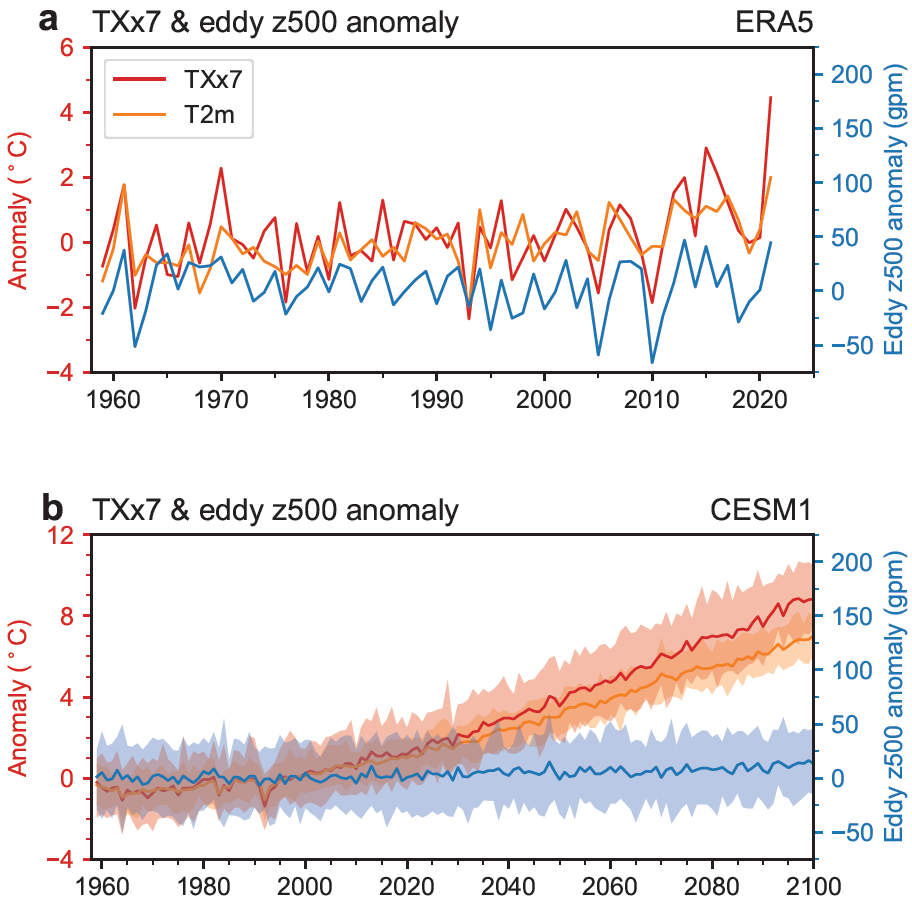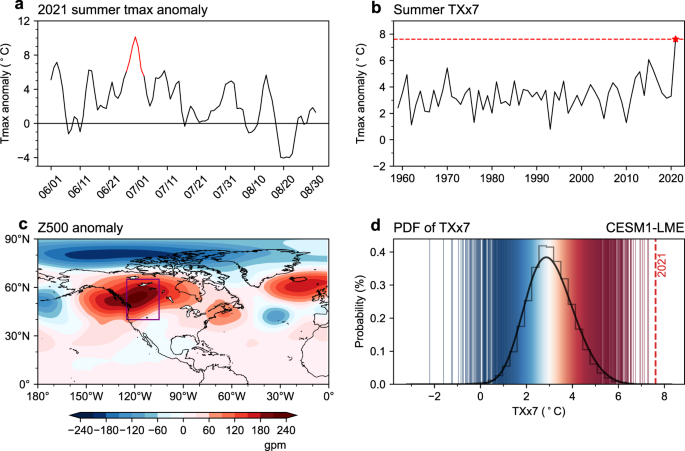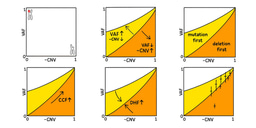Increased impact of heat domes on 2021-like North American heat extremes due to background warming and soil moisture feedback
Published in Earth & Environment
A severe heatwave affected Western North America including northwestern United States and western Canada during the last week of June 2021 with the daily maximum temperature anomalies over 16 ℃ to 20 ℃ in many cities. The heatwave and associated wildfires occurred during and after the event resulted in a mortality of 1400 (http://thoughtleadership.aon.com/Documents/20210012-analytics-if-september-global-recap.PDF).
A high-pressure system called “heat dome”, which traps hot ocean air like a cap, was a key atmospheric circulation system of the summer 2021 heatwave over Western North America. Whether the heat dome will continue to affect such harsh heatwave is of great concern to both the public and the scientific community.
In this study, using the “Flow Analog” method, we show that the heat dome over the Western North America contributed over 50% of the magnitude of the high temperature. We once hypothesized that the intensity of heat dome-like atmospheric circulation has increased with global warming. To test the hypothesis, we examined the long-term changes in extreme temperature and heat dome-like atmospheric circulation in the observations (Figure 1). While the temperature index exhibits an accelerated warming trend since 1990, no similar trend is seen in the evolution of a heat dome-like circulation index. This contradicts our hypothesis. The new findings indicate that the hot extreme associated with global warming could increase faster than atmospheric circulation. Such kind of relationship between extreme temperature and heat dome-like atmospheric circulation is also seen in both the historical climate simulation and future climate projection of the CESM1 large ensemble. The inconsistent changes between the heat dome-like circulation anomalies and hot extremes are also evident in the probability density function (PDF) distributions.

To test the robustness of the findings, we also apply the flow analog method to two different historical periods: the earlier (1959-1990) and present (1991-2020) periods. In the ERA5 reanalysis, the maximum temperature anomalies over the Western North America are significantly higher in the present period (3.55 °C: 3.20-3.88 °C) than in the earlier period (3.49 °C: 3.16-3.84 °C) under similar heat dome circulations as those in 2021 (Figure 2). Since the trend of temperature has been removed prior to the flow analogue analysis, the results indicate that the intensities of hot extremes associated with similar heat domes have increased faster than background warming. The results are also demonstrated by the large ensemble historical climate simulation of the CESM1 model (Figure 2).
Under given global warming levels, the maximum temperature anomalies increase faster than the mean surface temperature under similar circulations. For example, when the global mean temperature increases from 1°C to 3 °C, the maximum temperature associated with similar heat domes increase by 3.5 °C, indicating the intensities of hot extremes associated with similar heat domes increase faster than background global warming.

Apart from the circulation, the hot extreme is also related to the simultaneous soil moisture deficit. Applying the flow analog method to soil moisture finds strong feedback to heat extremes. A drier tendency in soil moisture during recent decades are found. Hence, the soil moisture-atmosphere feedback partly explains why the intensities of hot extremes associated with similar heat domes increase faster than background global warming.
According to IPCC AR6, the observed increase in extreme heat events is significant in Western North America. If we limit global warming to 1.5 °C instead of 2 °C (3.0 °C), the 0.5 °C (1.5 °C) less warming would reduce the population exposures to 2021-like heat extreme in the Western North America by ~53% (89%) under the RCP8.5-SSP5 scenario. This has important implications for climate mitigation and adaptation activities.
Follow the Topic
-
Nature Communications

An open access, multidisciplinary journal dedicated to publishing high-quality research in all areas of the biological, health, physical, chemical and Earth sciences.
Related Collections
With Collections, you can get published faster and increase your visibility.
Clinical trials 2025
Publishing Model: Open Access
Deadline: Dec 31, 2025
Women's Health
Publishing Model: Hybrid
Deadline: Ongoing





Please sign in or register for FREE
If you are a registered user on Research Communities by Springer Nature, please sign in